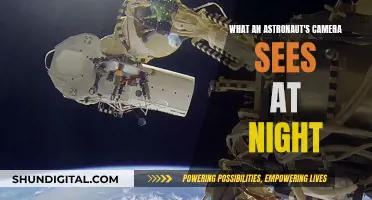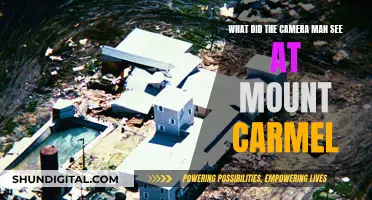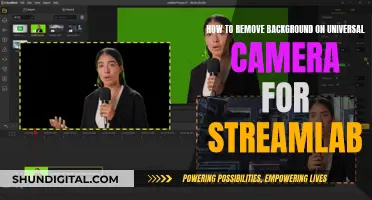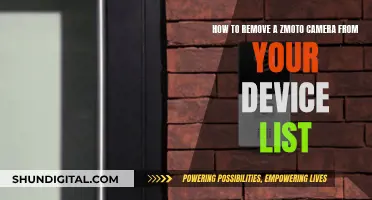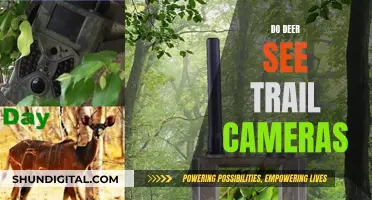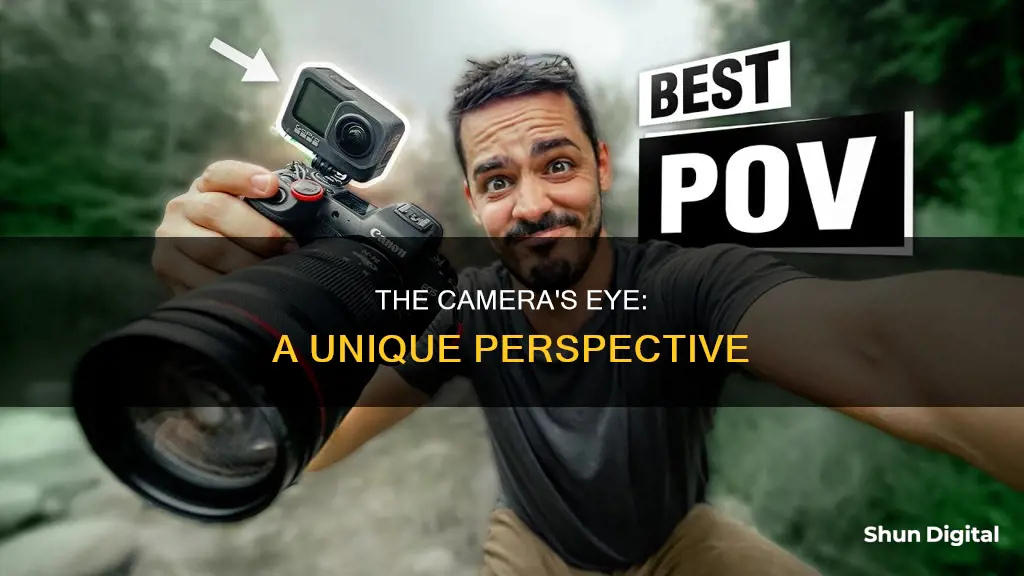
The camera is a powerful tool that can be used to capture and convey a unique perspective. In the hands of a photographer, it becomes a medium for creative expression, allowing them to showcase their distinct vision of the world. Perspective in photography refers to the visual connection between the elements within a frame. It encompasses the angle, composition, and viewer's position, all working together to present the subject in a specific way.
There are various types of perspectives that photographers can utilise to add depth, emotion, or movement to their images. Linear perspective, for instance, uses converging lines to create an illusion of depth, commonly employed in architectural and street photography. High-angle and low-angle perspectives alter the power dynamic between the subject and the viewer, making them appear vulnerable or dominant, respectively. Forced perspective manipulates the size and distance of objects to create a sense of scale, while fisheye perspective distorts the image to add visual interest.
The choice of perspective is not just a technical decision but also a creative one, as it allows photographers to challenge the way people perceive the world. By experimenting with different viewpoints, playing with light, and manipulating focus, photographers can evoke specific emotions and tell unique stories through their lens.
| Characteristics | Values |
|---|---|
| Camera angle | Objective, subjective, point-of-view |
| --- | --- |
| Linear perspective | Converging lines that create an illusion of depth and distance within a frame |
| High-angle perspective | Camera positioned above the subject, looking down |
| Low-angle perspective | Camera positioned below the subject, looking up |
| Forced perspective | Manipulating the size and distance of objects to create a sense of scale and depth |
| Fisheye perspective | A fisheye lens that creates a distorted perspective, adding visual interest and drama to an image |
What You'll Learn
- Objective shots: The scene is viewed as if spying on the action
- Subjective shots: The camera sees what a character sees, through their eyes
- Point-of-view shots: The camera is positioned as if standing next to a character, seeing the action from their viewpoint
- High-angle shots: The camera is positioned above the subject, making them appear small and powerless
- Low-angle shots: The camera is positioned below the subject, making them appear dominant and powerful

Objective shots: The scene is viewed as if spying on the action
Objective shots are a type of camera angle used in filmmaking, as defined by Joseph V. Mascelli in his book, *The Five C's of Cinematography*. In an objective shot, the scene is depicted as if the audience is spying on the action, observing from a sideline viewpoint. This technique creates an impersonal and candid effect, as the people in the scene appear unaware of the camera and never look directly into the lens. If a character were to make eye contact with the camera, the scene would need to be reshot or reframed as a subjective shot.
Objective shots are often used to establish a sense of detachment or surveillance, as if the audience is eavesdropping on the scene. This can create a sense of intrigue or suspense, as the viewer is positioned as an unseen observer, separate from the action. The objective shot is a powerful tool for filmmakers to convey information or build tension, without giving away too much. It allows the audience to feel like a voyeur, witnessing events unfold from a distance, without the characters' knowledge.
In contrast to subjective shots, where the camera sees the action through the eyes of a character, objective shots provide a more detached and observational perspective. This can be useful for building suspense, as the audience is given a glimpse of what is happening without the characters' knowledge, creating a sense of anticipation or foreboding.
Objective shots can also be used to establish the context of a scene or provide important narrative information. For example, an objective shot of a room before introducing a character can give the audience a sense of the setting and the atmosphere. It can also be used to reveal plot points or important details that the characters themselves may not be aware of, adding a layer of complexity to the narrative.
The use of objective shots allows filmmakers to manipulate the audience's perspective and control the flow of information. By choosing when to use objective shots and when to switch to other camera angles, filmmakers can create a sense of pacing and build tension at crucial moments in the story.
In summary, objective shots are a powerful tool in filmmaking, allowing the audience to observe the scene as if spying on the action. They provide a sense of detachment, creating an impersonal and candid effect. Used effectively, objective shots can build suspense, convey information, and manipulate the audience's perspective to enhance the storytelling experience.
Choosing the Right TV Camera: A Comprehensive Guide
You may want to see also

Subjective shots: The camera sees what a character sees, through their eyes
Subjective shots are a powerful way to immerse the audience in the story and make them feel like they are experiencing the events themselves through a character's eyes. This technique is achieved by positioning the camera as if it is the character, seeing what they would see.
Subjective shots are an effective way to build a connection with the character and involve the viewer in the narrative. The audience is placed in the scene, either on their own or by trading places with the character. This technique adds a layer of intimacy to the storytelling, as the viewer feels they are participating in the action rather than merely observing.
A subjective shot is often established by showing a character looking off-screen, followed by a shot of what they are seeing. This technique is not limited to a single character's perspective and can be shared between two or more characters. It can also be achieved by filming over a character's shoulder, with their back to the camera, or by having a character look directly into the lens, creating an eye-to-eye relationship with the viewer.
Subjective shots can be disorienting if overused, so filmmakers should use them sparingly. However, when used effectively, they can heighten suspense, especially in horror and thriller genres, and create a sense of chaos or fear by tilting the camera.
A notable example of a film that utilises subjective shots is the 1947 film noir *Lady in the Lake*, which is shot entirely through the subjective POV of its central character, replicating the first-person narrative style of the Raymond Chandler novel on which it is based.
Blocking Smart TV Cameras: Securing Your Privacy
You may want to see also

Point-of-view shots: The camera is positioned as if standing next to a character, seeing the action from their viewpoint
Point-of-view (POV) shots are a fundamental technique in film editing. POV shots are usually short film scenes that show what a character is looking at in the first person. The camera acts as the eyes of a character, and the audience sees what that character sees. POV shots are often used to build suspense in horror and thriller movies, as the audience only sees what one character sees.
POV shots are usually established by positioning the camera between a shot of a character looking at something and a shot showing the character's reaction. This technique can also allow other characters to break the fourth wall by looking directly into the camera. POV shots are often shot with a hand-held camera to accentuate the subjective perspective.
According to Joseph V. Mascelli's book, "The Five C's of Cinematography", there are three types of shots: objective shots, subjective shots, and point-of-view shots. An objective shot is filmed from a sideline viewpoint, as if spying on the action, and no one will ever look into the lens because the camera is not part of the scene. A subjective shot, on the other hand, is filmed from a personal viewpoint, and the audience sees the action through the eyes of a character. Mascelli defines a point-of-view shot as falling between these two types of shots. In a point-of-view shot, the camera is positioned as if standing next to a character, seeing the action from their viewpoint, but not through their eyes. This allows the camera to remain an unseen observer, maintaining an objective perspective.
Directors like Alfred Hitchcock, Steven Spielberg, and Quentin Tarantino have effectively used POV shots in their films to achieve various narrative effects and immerse the audience in the story.
Apple's Privacy Policy: Can They Access Your Camera?
You may want to see also

High-angle shots: The camera is positioned above the subject, making them appear small and powerless
High-angle shots are a versatile tool in a filmmaker's toolkit, conveying a range of emotions and narrative cues. This angle is achieved by positioning the camera above the subject, looking down on them from a higher vantage point.
One of the key effects of high-angle shots is to create a sense of inferiority or vulnerability in the subject. The camera's perspective, looking down on the character, can make them appear smaller, less dominant, and more powerless. This is often used to great effect in scenes where a character is facing a moment of weakness, fear, or is under threat. The high-angle shot can also be employed to establish the dominance of another character or force, further emphasising the subject's lack of power.
In addition to conveying power dynamics, high-angle shots offer a clear view of the surrounding area, helping to establish a sense of space and layout. This can be particularly useful in providing spatial context to a scene, especially when combined with other camera movements such as tilting or tracking.
Furthermore, the high-angle shot can evoke feelings of vulnerability, inferiority, or submission in the viewer. This sense of powerlessness can be heightened when the shot is used to symbolise surveillance, control, or the presence of a higher power. The high angle can also be used to intensify suspense, especially when a character is under threat.
While commonly associated with feelings of vulnerability and powerlessness, the high-angle shot has its exceptions. For instance, in certain scenes, a high-angle shot may be used to create a sense of distance between characters or objects, rather than always implying power dynamics.
The high-angle shot is a powerful tool that can influence the audience's perspective and emotions, shaping how they perceive the characters and scenes within a film. Filmmakers can use this angle to subtly convey narrative cues and enhance the impact of the story.
Troubleshoot Avast Blocking Your Camera: A Quick Guide
You may want to see also

Low-angle shots: The camera is positioned below the subject, making them appear dominant and powerful
Camera angles play a crucial role in visual storytelling, conveying various emotions, perspectives, and meanings to the audience. One such angle is the low-angle shot, which is achieved by positioning the camera below the eye line of the subject, often below their feet, and pointing upward. This angle can make the subject appear dominant, powerful, and intimidating. It can evoke a sense of awe, admiration, or fear in the audience, making them feel small and insignificant in comparison.
Low-angle shots are often used to convey power. For instance, in the film *The Matrix*, a low-angle shot is used to show that the Agents are in control. In another example from *Raising Arizona*, a low-angle shot of a biker emphasises his determination to catch his man. Low-angle shots can also be used to amplify the heroic qualities of a protagonist, as in a film celebrating heroism and triumph. They can make a character seem larger-than-life and are commonly used in heroic or villainous shots.
In addition to conveying power, low-angle shots can also signal vulnerability. By presenting the character from an unusual angle, often with a confined frame, the audience may perceive the character as vulnerable or trapped. Low-angle shots can also be used to highlight the grandeur of architectural structures or scenic landscapes, emphasising their magnitude and creating a sense of wonder.
Low-angle shots are a valuable tool in visual storytelling, allowing filmmakers to evoke specific emotions and perceptions in the audience, adding depth and nuance to the narrative. By understanding the psychological impact of low-angle shots, directors can make informed creative decisions and amplify the emotional resonance of their stories.
Watching USB Cameras: A Beginner's Guide to Live Viewing
You may want to see also
Frequently asked questions
POV stands for Point-of-View shot. It is a film scene where the camera shows what a character's eyes would see. It is usually a short scene positioned between a shot of a character looking at something and their reaction.
There are three types of POV shots: objective, subjective, and point-of-view. An objective shot is filmed from a sideline viewpoint, as if spying on the action, and no one looks into the lens. A subjective shot is filmed through the eyes of a character, showing their viewpoint and reaction. A point-of-view shot is somewhere between objective and subjective; the camera is positioned as if standing cheek-to-cheek with the character, showing their viewpoint without being through their eyes.
A high-angle perspective is when the camera is positioned above the subject, looking down. This technique makes the subject appear small and powerless, creating a feeling of vulnerability. It is often used in aerial and landscape photography to emphasize the scale of the environment.
Forced perspective involves manipulating the size and distance of objects to create a sense of scale and depth. It adds a unique twist to an ordinary scene and is commonly used in travel photography.
The camera angle significantly affects the viewer's perception of the image and its subjects. It can emphasize or de-emphasize certain elements, create a sense of depth, and evoke specific emotions in the viewer.


